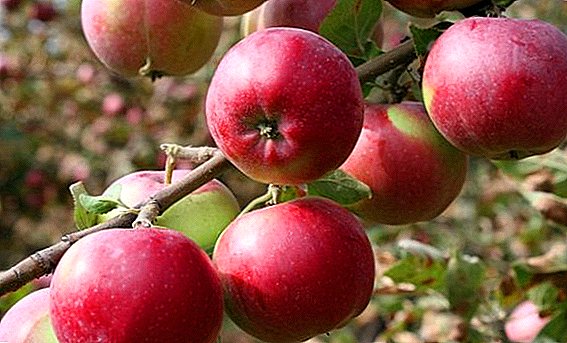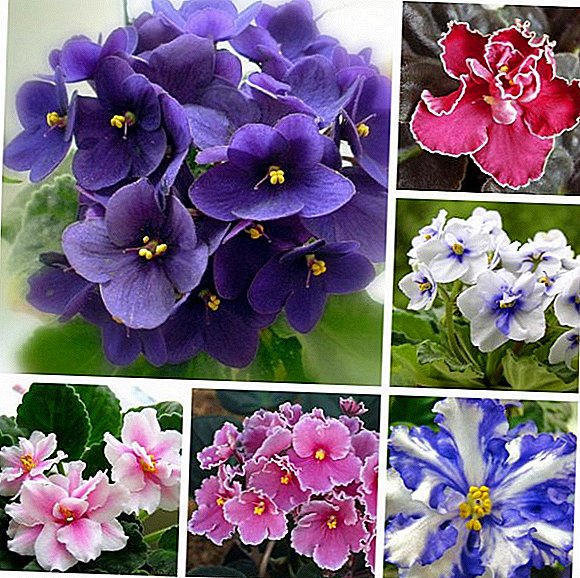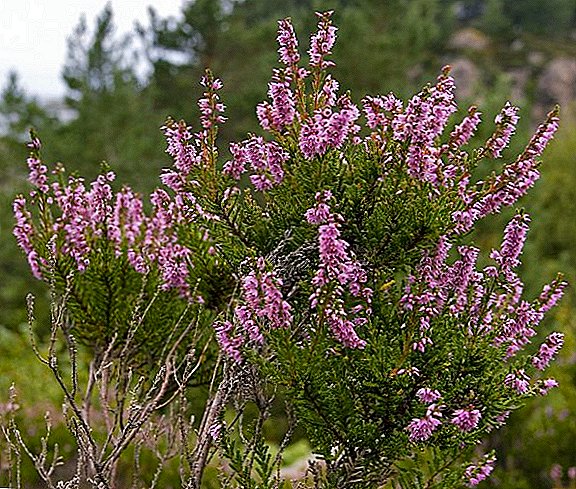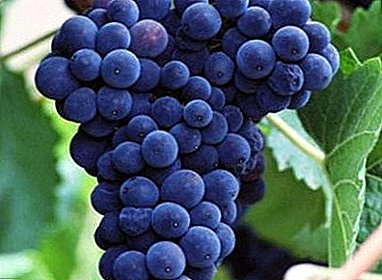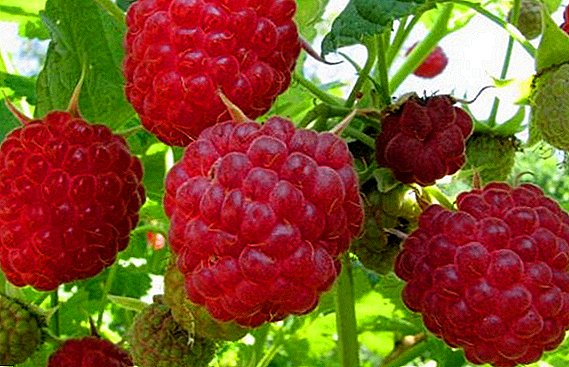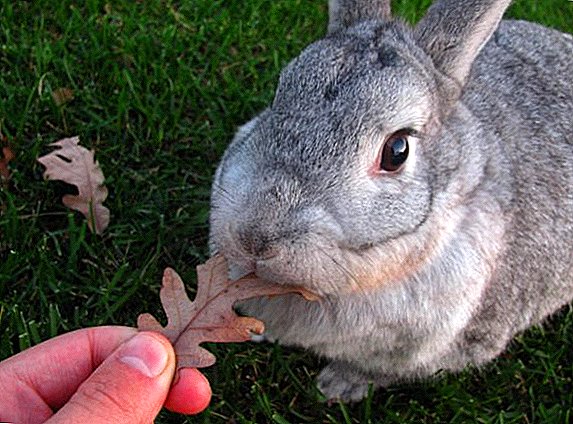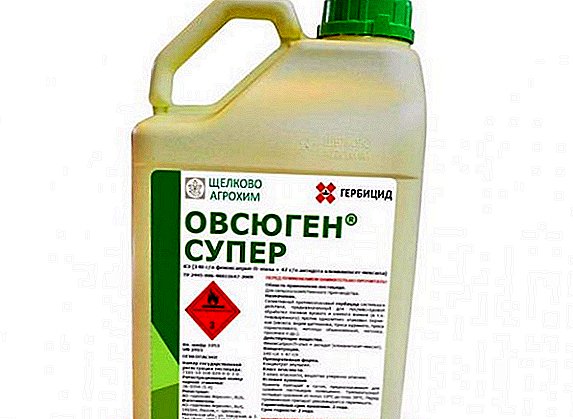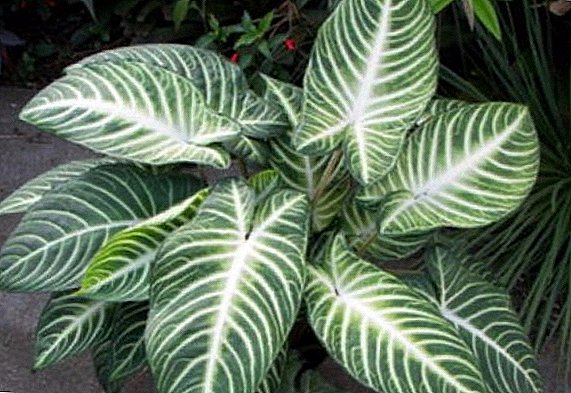 The tricky word "rhododendron" consists of two words "rhodon" and "dendron", which means "rose tree". This name ideally corresponds to the spreading shrub, which in the period of flowering is decorated with clusters of flowers. Today, rhododendron is actively used in landscape design - for this breeders have created various varieties, including winter-hardy. Such instances are perfect for the harsh conditions of the Urals, if properly followed the technique of their cultivation.
The tricky word "rhododendron" consists of two words "rhodon" and "dendron", which means "rose tree". This name ideally corresponds to the spreading shrub, which in the period of flowering is decorated with clusters of flowers. Today, rhododendron is actively used in landscape design - for this breeders have created various varieties, including winter-hardy. Such instances are perfect for the harsh conditions of the Urals, if properly followed the technique of their cultivation.
Winter-hardy species and varieties
Experts made sure that these species did not require significant care, calmly endured the winter cold and delight in lush flowering. Let's take a closer look at frost-resistant rhododendrons:
- Daursky (wild rosemary). This sprawling bush has great potential - it can reach 160-180 cm in height. Lilac or pink flowers appear on it in late April - early May. But its blooming can be damaged by long thaws, although in the winter the wild rosemary carries temperatures up to -45 ° C.
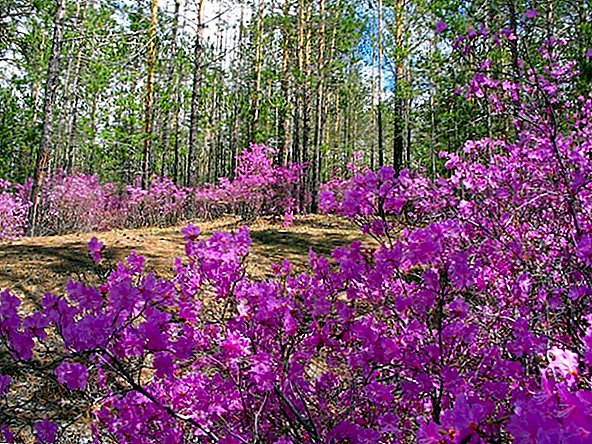
- Canadian. It is a low species (up to 1 m in height), possessing bluish leaves and lilac flowers. It is easy to care for him, and his crown is perfectly shaped.

- Rhododendron Ledebour (maral). Resistant shrub grows to 170-190 cm, although it has a fairly compact form. In early spring, he sheds some of the old leaves, before in April-May to be covered with lilac flowers. Rhododendron tolerates temperatures down to -32 ° C, but a long lack of heat can disrupt its growth.

- Rhododendron Schlippenbach. Very beautiful, but rather rare species listed in the Red Book of Russia. Due to the height of 170-180 cm, it is often mistaken for a tree, on which large flowers of white, pinkish, peach tones grow. They look luxurious in inflorescences of 4-5 pieces. As for frosts, this species withstands temperatures up to -32 ° C.
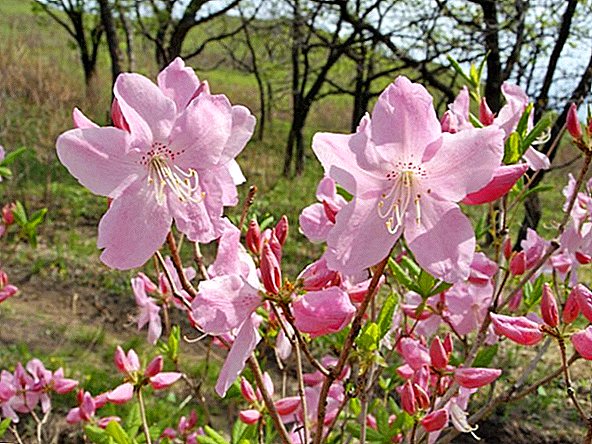
- Yellow (Pontic Azalea). This rhododendron is not too high, only 100-130 cm, it is able to survive the frosts to -32 ° C and grows even on the soil of neutral acidity. He will please his master with the fragrant yellow flowers that appear in mid-April - early May.

If you prefer rhododendrons, which can calmly experience average winters, read about the most popular winter-hardy rhododendrons.
Choosing a place on the site
Whichever variety is preferred, before planting, examine the site for the right place. When choosing it, pay attention to the following indicators:
- The soil. Rhododendrons love sour soil, especially peat. They will love the sour peat substrate mixed with sand in a 1: 1 ratio, seasoned with pine needles and crushed pine bark. These plants need a sour soil rich in humus and oxygen. They do not tolerate limestone, alkaline or neutral soils.
- Lighting. The bush will be grateful for a cozy place in the soft shade of higher trees, it will be convenient for it from the northern side of the building, where the sun's rays will not reach him in the hot afternoon.
- Windy Rhododendrons do not like sharp and cold gusts of wind, so they can not be placed in open areas.

Important! The flowers, leaves and stems of yellow rhododendron are poisonous, so you need to work with them carefully.
Selection of seedlings
The best time for planting frost-resistant varieties will be spring. The main thing - to pick up this time the necessary seedling. First of all, decide which sort of interest you are.
Next you need to find a good supplier. High quality products offer nurseries and agrofirms, but before you make a purchase, read the reviews on these companies. Ask around at gardeners you know, look for information on the Internet.
Did you know? In the high mountains of the Himalayas grow special rhododendrons, the nectar of which contains poison. It produces honey, which is in great demand among admirers of traditional medicine. It is very difficult to collect this sweet poison, because it occurs at the level of 2500 m above sea level, and the nectar itself has a hallucinogenic effect on collectors.
 Rhododendron Saplings
Rhododendron SaplingsIf there is an opportunity to take a sapling from a gardener from your own area, this is also a great option. After all, this plant probably passed acclimatization and showed itself perfectly in a harsh climate, so you do not risk losing it after the first winter season.
To acquire rhododendrons in the market or fair is only as a last resort and only from trusted suppliers. Unfortunately, in such conditions, sellers may confuse varieties. And not always there are qualified professionals who can talk about the nuances of caring for a sapling.
Familiarize yourself with the most famous rhododendron species: Ledebour, Dahurian and Schlippenbach.Buying time also plays a role. It is better to do this in the spring, just before planting. But good specimens are often sold in the fall. The seedling purchased in October-November is important to be properly preserved for planting in the spring. To do this, it is instilled in a container, tightly wrapped and placed in a quiet, remote corner of the garden. Great, if there is a place in a cool, closed room. With low air humidity during this period, the sapling needs periodic spraying.

Important! The ideal option for planting is a 2-4-year-old shrub with a large number of shoots and smooth leaves with no signs of damage or disease.
Be sure to inspect the roots: they should not be knots or stains. At this age, a sapling grown from seed and in the open field will reach 12-15 cm. And the former cuttings will be much larger - 20-25 cm, and they look more powerful.
Choosing a quality sapling and the right place for planting, go directly to the process. 
How to plant on the site
We begin the landing of the selected rhododendron in the spring, approximately in the beginning-middle of April. The algorithm in this case is simple:
- Before planting, lower the seedling into a container with water so that its roots are saturated with liquid. This will help them settle down on the new place. When air bubbles cease to appear on the surface of the water, it means that rhododendron has collected enough water.
- While drinking a sapling, dig a hole. Depth it should be 35-40 cm and a width up to half a meter.
- We lay out the first 10 cm of the pit with a sand and pebble drainage, then we tamp the peat layer with loam (2: 1).
- In the substrate we make an indentation for the rhizome of rhododendron, where it is neat and lowered.
- Well sprinkle soil sapling to the root of the neck was covered, and the soil leveled with the ground around.
- Finally, we pour water and cover the place around the trunk with moss, leaves, crushed oak bark. Such mulching will retain moisture and acidity of the soil.
 Rhododendron planting
Rhododendron plantingImportant! To help the plant take root, cut the first buds on its trunk. Then the rhododendron will send more forces to the development of the roots.
Proper planting is a good start; further development of rhododendron depends on caring for it.
How to care
If you manage to choose the right place and carry out the primary mulching, further care will become easier.
Let's talk more about it:
- Top dressing. Rhododendron is nourished from the day of planting until the end of the flowering period, and later on - every spring. To do this, take ammonium nitrate or ammonium sulfate, as well as superphosphate at the rate of 20-40 g per 1 sq. Km. If the plant is on loamy or sandy soil, add a solution of sorrel or citric acid (in the same proportion) to top dressing. 1-2 years after planting, it is time to change the top layer of soil. To do this, we prepare a substrate of peat and humus (compost) in equal proportions, add superphosphate, ammonium or potassium (1 tbsp) and sprinkle the soil around the plant. Before feeding do not forget to water the plant.
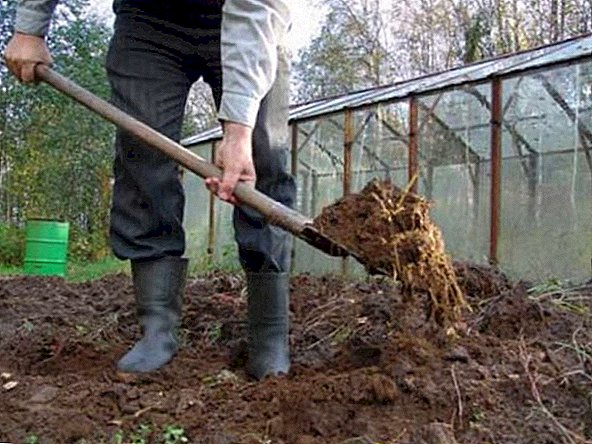
- Watering. In matters of water supply, rhododendron is a controversial plant: it feels bad without watering, but for it excess moisture is destructive. The bush itself will report that it needs watering, with the help of softened and dull leaves. To humidify, prepare water in advance if it is from the tap, but it is better to use rain moisture. Do not forget to add to the liquid 2-3 handfuls of sphagnum peat 12-15 hours before watering.

- Loosening. This is an important process for rhododendron, but must be carried out carefully. The roots of the plant come close to the surface, so we loosen shallowly and carefully. Weeds are removed only by hand, without the help of hoes and garden knives.
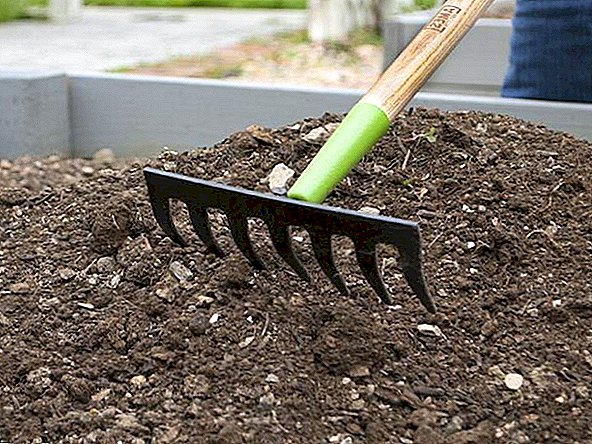
- A haircut. It is obligatory only at the beginning of March - before the active movement of juices begins. Choose strong branches older, with a diameter of 3-4 cm, and cut off the ends with garden shears, greasing the cuts with resin or garden pitch. After a month, the plant will completely forget about the procedure, but it will have dormant buds and new shoots will appear. Such pruning will contribute to the formation of a lush crown, which will decorate any garden.

- Diseases and pests. For the prevention of diseases, treat the plant Bordeaux liquid and means from bedbugs and powdery worms ("Thiram", "Karbofos") at the end of autumn or mid-spring. Otherwise, slugs and spider mites will appear on its branches, which will need to be assembled manually (and after that - after all, processing should be carried out). If the plant suffers from rot, the affected parts are removed.
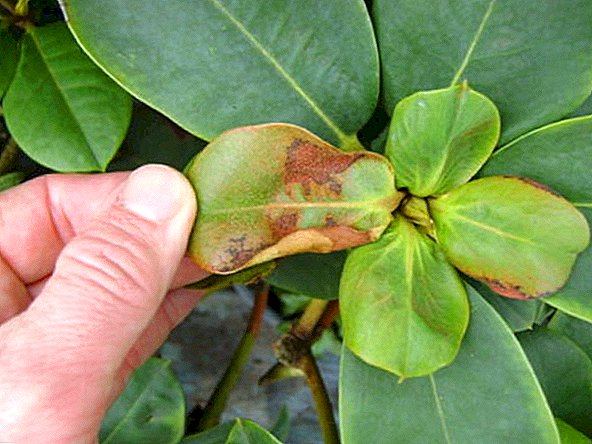
If you care about the health of rosewood, check out the main diseases and pests of rhododendron.
For 2-3 years, the rhododendron is already ready to survive the winter frosts, but before the first cold weather in the open field it is still advisable to cover the bush with non-woven material.
Breeding methods
Rhododendrons can be propagated using:
- seeds;
- cuttings;
- offsets.
Important! A characteristic feature of rhododendrons is uneven flowering. Having pleased the luxurious bloom of the hosts this year, next year he will not be so generous. To improve the situation, timely cut the old buds after flowering, then the plant will gain more strength for the future.
Seeds
This method is the longest and most laborious. Flowering in this case will occur only in the 4th year.
But if you all decide to practice this method, you will need:
- soil: for the substrate - suitable peat, sod, coniferous base;
- right time: you need to sow in February-March or December-January;
- Seeds of the variety you like.
Did you know? The giant rhododendron is the largest member of the family, it can reach a height of 30 meters.
 Rhododendron seeds
Rhododendron seedsNow let's talk about how to apply it all:
- To begin with, we soak the seeds in a growth stimulator for several days, or do a stratification in a refrigerator at 3-5 ° С.
- Before planting, mix the seeds with sand and immerse them in a container with the soil no deeper than 1.5-2 cm, otherwise the grains will not germinate.
- Lightly spray the seedlings with warm water and cover with glass or film to create the greenhouse effect.
- Next, it is important to create the right environment for seed germination. For this you need a temperature of 10-16 ° C, humidity in the range of 25-40% and the absence of a bright sun.
- In the morning and in the evening, the beds need to be aired, and also regularly sprayed.
- The timing of the emergence of the first shoots depends on the variety, but on average it takes 2-3 weeks. A little later it will be seen and cotyledons, which can be divided plants. If they look in different directions, it means that they need to be picked at a distance of 1.5-2 cm.
- Towards the middle of autumn, when the plants already have 5-9 leaves, it is time to pick them in separate containers. To do this, you will need pots with a diameter of 3-5 cm, on the bottom of which we put drainage from broken brick, rubble and pebbles. In the new tank should be the following substrate: peat, pine needles and sod land (2: 1: 1) with 2 tbsp. l sand.
- In order not to damage the fragile roots, transplant rhododendron along with a clod of earth.
- Although the capacity is already new, but the conditions for growth are still the same: the shadow from direct sunlight, regular airing and watering.
- By the beginning of 2 years after germination, saplings reach 4-5 cm and have a dozen leaves. Now they will need a pot of 5-7 cm in diameter, but the recipe for the substrate is the same.
- Grown sprouts for spring-summer are already being carried out into the garden, hiding from the sun. And before the first frosts return to the room where the temperature is kept at the level of 8-11 ° C, and humidity - 40-45%.
- With the onset of heat, we take the pots into the garden and we drop them in the ground. Water as needed, and once a quarter we do top dressing with 4% solution for indoor plants. By the end of autumn the plants are brought back into the room.
- For 4 years, the process is repeated, although some species (Dahurian, Ledebour) are already ready for planting in open ground. For 5 years, all types of rhododendrons mature for a full landing.
 Shoots rhododendron
Shoots rhododendronDid you know? Large-leaved rhododendron - a symbol of the US capital of the city of Washington.
Growing lush bushes from seeds is justified from the point of view of their health, because the plants obtained in this way are much stronger and more stable than those obtained from cuttings or cuttings.
Cuttings
This method works faster than reproduction with seeds. But not all species tolerate it equally well: the cuttings of Daurian rhododendron and Ledebour respond best to the procedure, whereas yellow, Pontic, Schlippenbach rarely root.
The harvesting begins at the end of flowering, from May to June. For reproduction, select slightly stiffened shoots or a green tip. The estimated length of the shoot is 5-8 cm, they usually have 4-6 leaves.
Experienced gardeners are encouraged to learn tips on the care and planting of rhododendron.
 Rhododendron Stalk
Rhododendron StalkWe begin the process of planting with cutting:
- We separate the stalk under the sleeping kidney, remove the top and lower leaves from it. Bottom (1-2 cm) we clean to white color - in the future it will help rooting.
- Place the cut cut into the growth stimulator for 15-17 hours to give strength to the future germ.
- We prepare the substrate for planting - it consists of pure river sand and peat in equal proportions.
- In the capacity of the first 8-10 cm lay claydite, then - 7-8 cm of the substrate, and then - 1-2 cm of sand.
- We lower the stalk into the soil for the length of the trimmed area, sprinkle with substrate and water. Cover the container with a film or glass, then hide it in the shade of direct sunlight. The optimum indoor temperature for successful germination is 16-21 ° C.
- If you plan to plant several copies at the same time, then the distance between them should be at least 4-5 cm.
- Rooting depends on the species, but on average, it will take from 40 to 120 days for the root socket to appear.
- The rooted specimens are transplanted into large boxes, where the distance between the rhododendrons is already 8–10 cm. Sour peat, leaf soil, sand and needles (2: 2: 1: 1) will be needed as soil. Freshly transplanted cuttings are sent to a room with a low temperature of 3-7 ° C. Do not forget to pinch the top before this.
- If buds appear next spring, they must be removed so as not to deprive the sprout. Again we pinch the tops, and with the onset of heat we plant cuttings in open ground, on the above-described substrate.
- The new rhododendron needs regular watering and spraying, and it should be mulched before the cold.
 Reproduction of rhododendron cuttings
Reproduction of rhododendron cuttingsFor 3 years the plant is ready to transplant (if necessary) to its permanent place, and may even please with flowering.
Did you know? The maximum height at which the rhododendrons met was 6 thousand meters above sea level.
Layering
The third option is suitable for those who do not need a lot of new bushes. However, remember that plants from cuttings are not famous for longevity and good health.  Rhododendron layering
Rhododendron layering
But to get a new copy in this way is very easy:
- In May-June, take a twig from the bottom of the bush and secure it in a small recess on the ground.
- Top sprinkle the place with local soil fortification with the addition of peat, and set the trunk of the shoot vertically, tying it to the support.
- In order for the cuttings to have their roots sooner, it must be watered regularly, preventing the land from drying out in this place.
- Toward winter, wrap a new sprout with mulch and spruce branches.
- It is desirable to separate the escape from the parent plant in the spring, the third year after cutting, but some gardeners do it already in the second autumn.
- The future bush is transplanted into a cozy, closed from the wind and the sun a place where the plant will gain strength for the next 2-3 years.
- After that, the adult is transplanted to the planned permanent place.
 Rhododendron reproduction by layering
Rhododendron reproduction by layeringApplication in landscape design
Rhododendron - a great decoration for any site. The main thing is to choose for it, as for a diamond, the correct setting.
He looks good surrounded by coniferous and heather groups, which provide him with the necessary shadow. And ferns, host, juniper emphasize the original forms of rhododendron.
Important! Decorators love this plant for a long period of flowering, so in large areas varieties are not uncommon picked in such a way that they bloom in turns.


By the way, rhododendrons look great in one copy or in groups of 3-5 bushes. Small bushes will be an ornament for borders and small flower beds, higher ups are used for planting along the walls of houses. And two large, lush rhododendron will play the role of natural "gate" into the yard or garden.
Ознакомьтесь со всеми особенностями выращивания рододендронов в Сибири, в Подмосковье и Ленинградской области.
Although the rose tree has nothing to do with traditional roses, yet its appearance and bright colors attract no less. Winter-hardy species of this plant will sustain the frosty winters of the Urals, if the gardener takes good care of them. We hope that this article will help you in the process of growing rhododendron, and a beautiful lush bush will decorate your farmstead.
Video: how rhododendrons bloom in the Urals
Recommendations from the network about growing rhododendron
It is impossible to allow even short-term alkalization of the soil; watering with acidified water is obligatory!
In hot, dry weather, Rhododendrons are very fond of spraying, better than rain or river water, so that there is no alkalinization of foliage and soil.















